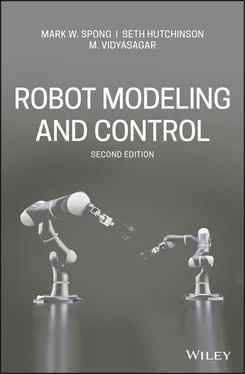313 309
314 310
315 311
316 312
317 313
318 314
319 315
320 316
321 317
322 318
323 319
324 320
325 321
326 322
327 323
328 324
329 325
330 326
331 327
332 328
333 329
334 330
335 331
336 332
337 333
338 334
339 335
340 336
341 337
342 338
343 339
344 340
345 341
346 342
347 343
348 344
349 345
350 346
351 347
352 348
353 349
354 350
355 351
356 352
357 353
358 354
359 355
360 356
361 357
362 358
363 359
364 360
365 361
366 362
367 363
368 364
369 365
370 366
371 367
372 368
373 369
374 370
375 371
376 372
377 373
378 374
379 375
380 376
381 377
382 378
383 379
384 380
385 381
386 382
387 383
388 384
389 385
390 386
391 387
392 388
393 389
394 390
395 391
396 392
397 393
398 394
399 395
400 396
401 397
402 398
403 399
404 400
405 401
406 402
407 403
408 404
409 405
410 406
411 407
412 409
413 410
414 411
415 412
416 413
417 414
418 415
419 416
420 417
421 418
422 419
423 420
424 421
425 422
426 423
427 424
428 425
429 426
430 427
431 428
432 429
433 430
434 431
435 432
436 433
437 434
438 435
439 437
440 439
441 440
442 441
443 442
444 443
445 444
446 445
447 446
448 447
449 448
450 449
451 450
452 451
453 452
454 453
455 454
456 455
457 456
458 457
459 458
460 459
461 460
462 461
463 462
464 463
465 464
466 465
467 466
468 467
469 468
470 469
471 470
472 471
473 472
474 473
475 474
476 475
477 476
478 477
479 478
480 479
481 480
482 481
483 482
484 483
485 484
486 485
487 486
488 487
489 488
490 489
491 490
492 491
493 492
494 493
495 494
496 495
497 496
498 497
499 498
500 499
501 500
502 501
503 502
504 503
505 504
506 505
507 506
508 507
509 508
510 509
511 510
512 511
513 512
514 513
515 514
516 515
517 516
518 517
519 518
520 519
521 520
522 521
523 522
524 523
525 524
526 525
527 526
528 527
529 528
530 529
531 530
532 531
533 532
534 533
535 534
536 535
537 536
538 537
539 538
540 539
541 540
542 541
543 542
544 543
545 544
546 545
547 546
548 547
549 548
550 549
551 550
552 551
553 552
554 553
555 554
556 555
557 556
558 557
559 558
560 559
561 560
562 561
563 562
564 563
565 564
566 565
567 566
568 567
569 568
570 569
571 570
572 571
573 572
574 573
575 574
576 575
577 576
578 577
579 578
580 579
581 580
582 581
583 582
584 583
585 584
To my wife Lila – MWS To my wife Wendy – SH To my grandson Niyuddh Anand – MV
This text is a second edition of our book, Robot Modeling and Control , John Wiley & Sons, Inc., 2006, which grew out of the earlier text, M.W. Spong and M. Vidyasagar, Robot Dynamics and Control , John Wiley & Sons, Inc., 1989. The second edition reflects some of the changes that have occurred in robotics and robotics education in the past decade. In particular, many courses are now treating mobile robots on an equal footing with robot manipulators. As a result, we have expanded the discussion on mobile robots into a full chapter. In addition, we have added a new chapter on underactuated robots. We have also revised the material on vision, vision-based control, and motion planning to reflect changes in those topics.
Organization of the Text
After the introductory first chapter, which introduces the terminology and history of robotics and discusses the most common robot design and applications, the text is organized into four parts. Part Iconsists of four chapters dealing with the geometry of rigid motions and the kinematics of manipulators.
Chapter 2presents the mathematics of rigid motions; rotations, translations, and homogeneous transformations.
Chapter 3presents solutions to the forward kinematics problem using the Denavit–Hartenberg representation, which gives a very straightforward and systematic way to describe the forward kinematics of manipulators.
Chapter 4discuses velocity kinematics and the manipulator Jacobian. The geometric Jacobian is derived in the cross product form. We also introduce the so-called analytical Jacobian for later use in task space control. We have reversed the order of our treatment of velocity kinematics and inverse kinematics from the presentation in the first edition in order to include a new section in Chapter 5on numerical inverse kinematics algorithms, which rely on the Jacobian for their implementation.
Chapter 5deals with the inverse kinematics problem using the geometric approach, which is especially suited for manipulators with spherical wrists. We show how to solve the inverse kinematics in closed form for the most common manipulator designs. We also discuss numerical search algorithms for solving inverse kinematics. Numerical algorithms are increasingly popular because of both the increasing power of computers and the availability of open-source software for numerical algorithms.
Part IIdeals with dynamics and motion planning and consists of two chapters.
Chapter 6is a detailed account of robot dynamics. The Euler–Lagrange equations are derived from first principles and their structural properties are discussed in detail. The recursive Newton–Euler formulation of robot dynamics is also presented.
Chapter 7is an introduction to the problems of path and trajectory planning. Several of the most popular methods for motion planning and obstacle avoidance are presented, including the method of artificial potential fields, randomized algorithms, and probabilistic roadmap methods. The problem of trajectory generation is presented as essentially a problem of polynomial spline interpolation. Trajectory generation based on cubic and quintic polynomials as well as trapezoidal velocity trajectories are derived for interpolation in joint space.
Part IIIdeals with the control of manipulators.
Chapter 8is an introduction to independent joint control. Linear models and linear control methods based on PD, PID, and state space methods are presented for set-point regulation, trajectory tracking, and disturbance rejection. The concept of feedforward control, including the method of computed torque control, is introduced as a method for nonlinear disturbance rejection and for tracking of time-varying reference trajectories.
Chapter 9discusses nonlinear and multivariable control. This chapter summarizes much of the research in robot control that took place in the late 1980s and early 1990s. Simple derivations of the most common robust and adaptive control algorithms are presented that prepare the reader for the extensive literature in robot control.
Читать дальше












